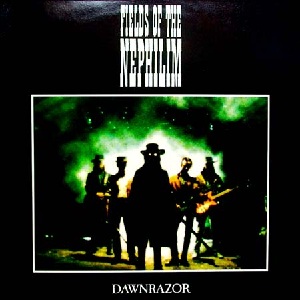 |
Audio Asylum Thread Printer Get a view of an entire thread on one page |
For Sale Ads |
 |
Audio Asylum Thread Printer Get a view of an entire thread on one page |
For Sale Ads |
24.118.163.44
In Reply to: RE: And there are some other factors in play..... posted by AbeCollins on May 04, 2022 at 09:38:28
In the particular 'Shootout' held at my Place, that I was referring to, we actually used the same DAC in the CD Player, against that CD player's Transport vs. a Streamer (Squeezebox Touch) plugged into the same CD Player's DAC. So, in our case the DAC was not being compared.
Edits: 05/04/22Follow Ups:
the 'streaming' you are talking about is taken from a website that feeds the digital signal into the computer, or DAC in this case... and you are listening to the file being fed as apposed to the CD, correct?
When fed from the web, what are the specs? 44.1 16bit or something different?
The Streaming that I refereed to when we did the 'shootout' was a Stream taken from a Hard Drive on my computer via my Home Network that fed a Streamer. That was basically an exact Copy or the CD which was the 44.1 16 bit.
It is also true that streaming can come from some other Disk that is available on a web site. This is usually the same CD quality (44.1 16 bit) in the case of Tidal or Qobuz.... But it can be much Higher Resolution or Lower than CD quality.

can you describe the most notable difference detected i.e. dynamics or high freqs etc.
it's funny that I've read of people who've ripped CD's also noting improvement in certain qualities. Others have said the opposite. I'm guessing it all comes down to the hardware used
The same issues apply ripping as apply to playing CDs. It problems in both cases occur in the laser reading process. Achieve better sound by ensuring CD is absolutely level during play, the level of the spinning CD is usually not the same as the top of the player or ripper so you have to figure out a different way to obtain level of CD. The reason level is important is because the CD tends to wobble and flutter at 250 rpm if it's not level, plus many CDs are not perfectly round which exacerbates the problem. Also damping the CD with three radial strips of black electrical tape, 3M 33 and Super 88 are superb.
Like the CD player the ripper should be isolated mechanically from the floor.
The tray of the ripper should be treated to absorb as much infrared light as possible. Turquoise or green, like the green pen of yore, is OK, but NDM is much better because it absorbs all light, included invisible light, which is what the CD laser uses, 780 nm near infrared light. Only about 1/4 of the CD laser light is RED, the other 3/4 is invisible. But you can still hear the effect of the green pen on a CD or coloring the tray turquoise or green, the color that absorbs red light.
Use black marker on inner edge of the CD, but purple on the outer edge. Never use black on the outer edge.
I think CD ripping applications sound so different, it would render your ideas about ripping CDs futile, in my humble opinion......As long as the data is correct numerically (no errors are introduced in the ripping process), nothing theoretically should make a noticeable difference...... But how a CD is ripped apparently has what I think is a profound impact on jitter signature..... Which I believe has been a grossly under-investigated phenomenon.

Edits: 05/06/22
That's the same argument everyone makes about CDs and CD players - Bits are bits. Surely you don't believe that.
If all of these things need to be done to make CD sound better, maybe CD isn't quite up to the task.
"Perfect Sound Forever" was never perfect. The disks were prone to not be perfect, the players were not perfect. I had an original Magnavox FD1000 and it sounded awful. I still have my early CDs and they still sounded awful on my more modern player. The CD was a technological marvel that was obsolete within a few years, except that the entire industry invested in it and had to stick with it.
I know a lot of audiophiles who believe CD playback (and digital playback in general) is hopelessly inadequate in regard to providing playback fidelity worthy of high-end audio......
I once believed that way..... I was about to give up on CDs personally..... Until I experienced a Wadia 7/9 CD playback rig, roughly 30 years ago......
I have been chasing the "Wadia 7/9 sound" for CD playback since that time.... And I think I was fortunate to get close enough to where I could enjoy CDs almost as much as I enjoy vinyl..... (I do think streaming would be a setback to this "chase"...... But I have a similar sentiment toward high-resolution digital audio playback.)
But the endeavor was excruciatingly difficult..... (And also very expensive..... I once did a 14 DAC shootout back in the late 1990s.) It's also a reason I could explain why I believe a lot of different forms of CD and digital audio playback don't sound right..... (I think the sonic artifacts in lossless/FLAC file playback, for example, are quite bizarre.) I've often been accused of having "golden ears," but I guess the quest for good sound can be overly obsessive for some people......



Eggs ackley! All CD players have these issues. Humpty Dumpty sat on a wall, nobody could put Humpty Dumpty together again. That's kind of my point.
People believe what they choose to believe. - Old audiophile axiom
1.) Air Temperature
2.) Magnetic influence of the associated Latitude and Longitude.
3.) Phase of the Moon and Tidal Influence
4.) Air Traffic Pattern of your exact Location
5.) Problems at your Local Electric Distribution Grid ....
AYFS ??

Would I hot dog you?
but just far enough to not hear them in the basement.
The Grid sucks the big one though
I am one that does not perceive any differences in sound quality between streamers and CD Transports, as long as the recording is the same, the DACs are the same etc.

"I am one that does not perceive any differences in sound quality between streamers and CD Transports, as long as the recording is the same, the DACs are the same etc."
I have had the opposite experience...... To the extreme......
This could be at the very crux of our disagreement over digital streaming......
The difference I perceive in CD transports, DACs, streamers, and even digital cables is so different, the only thing that would be even more different to me would be a vinyl rig with the alignments dialed in versus a vinyl rig with the alignments out-of-whack...... A difference that can be listening for hours and staying up past my bedtime versus shutting it down after less than ten minutes of playback and wanting to try something else.....
I think the perceived differences are due to changes in jitter performance and RFI emissions...... I believe digital audio with jitter signature preservation of the original A/D (not necessarily "low jitter") and low RFI emissions can approach analog playback.... But digital audio playback that doesn't do well here sounds flat-out "dull" and "lifeless" to me...... And also unlistenable for extended periods of time.
In fact, when I had computer audio, I thought different ripping applications of the same CD sounded vastly different, I thought different playback applications of the same audio file sounded different, I thought defragmentation of the hard drive drastically altered the sound of music files (almost always getting worse)...... I thought even different versions of the same application to sound different..... (This became **frustrating**, because what I thought was the best application for ripping a CD was no longer the best after an update took place.... ) Not to mention different digital cables making a huge impact on the presentation..... (I think it is a big deal to use optical right before the D/A takes place, due to RFI isolation from the upstream digital electronics.)
This is the core reason why I have shied away from streaming...... (There are other reasons, most notably not knowing which pressing I would have if the original source media wasn't a physical CD from my collection.) It's the reason why a lot of people would still rather listen to vinyl..... If this wasn't a problem, I believe vinyl playback would have been dead and buried a long time ago.



Pretty much have had similar experiences. audio players mattered, even drives and where the file was located made a difference. Adding a psu for the drives or the mobo made a difference.
Then I moved to network playing. Computer playback controlled by a phone, etc.
It was OK.
These days I ditched all that stuff and just use the Tascam DA3000 recorder but as a player. No network needed. Just sd card. Menus are basic, no cover art, but no security updates or software stuff to worry about. Or network issues.... Just find a "cd" you want, press play and sound is sent out to the dac...

Cut to razor sounding violins
I'll have to try that experiment again - streaming Tidal or Qobuz vs my own CD rips. I generally hear no difference but on the few occasions that I do, it's not like one is better than the other. They're just slightly different.
Maybe I'm not the OCD audiophile that I once was. Better revoke my membership card! On the other hand, I prefer volume control digital readouts to be on even numbers instead of odd. If my volume control lands on -33dB I have to change it to -34 or -32 ;-)

I should have said it really doesn't matter a lot these days if the source is a computer, streamer, or CDP. It really comes down to how their respective DACs sound.In my first example of using a Mac to drive the DAC in my CDP vs using the CDPs own transport, there was no repeatable sonic benefit or degradation either way. There may have been slight differences here and there with different tracks but for the most part the sonics were the same - go figure as they used the same DAC.
Edits: 05/04/22
| FAQ |
Post a Message! |
Forgot Password? |
|
||||||||||||||
|
||||||||||||||
This post is made possible by the generous support of people like you and our sponsors: